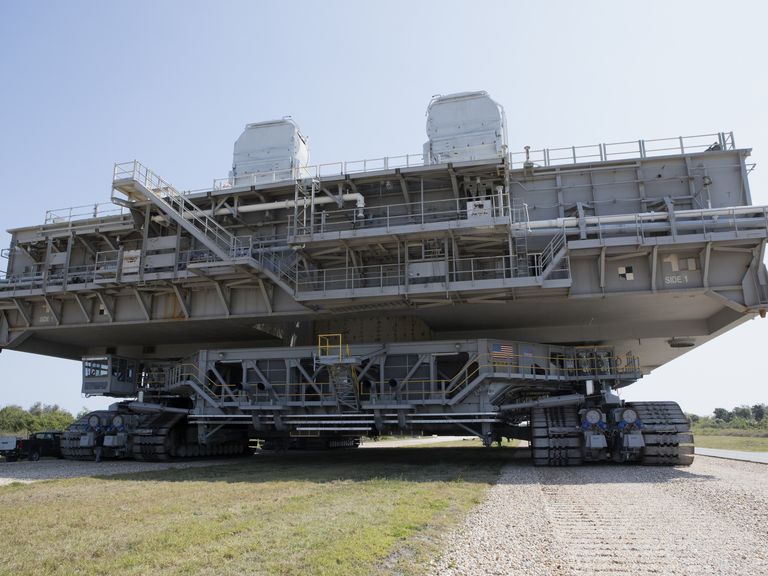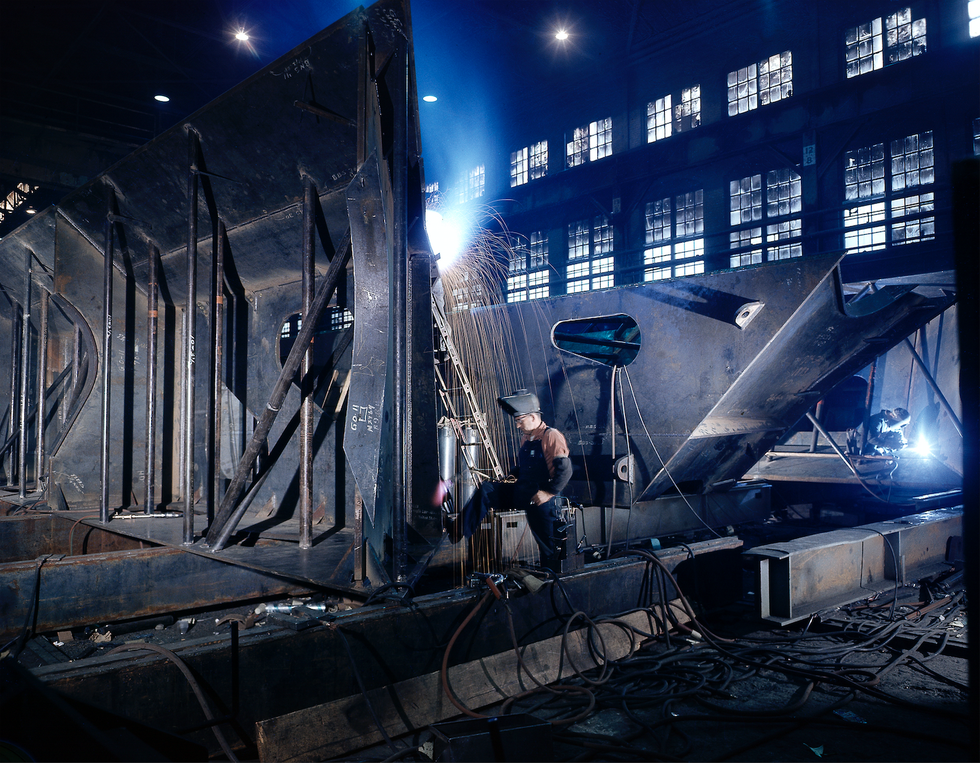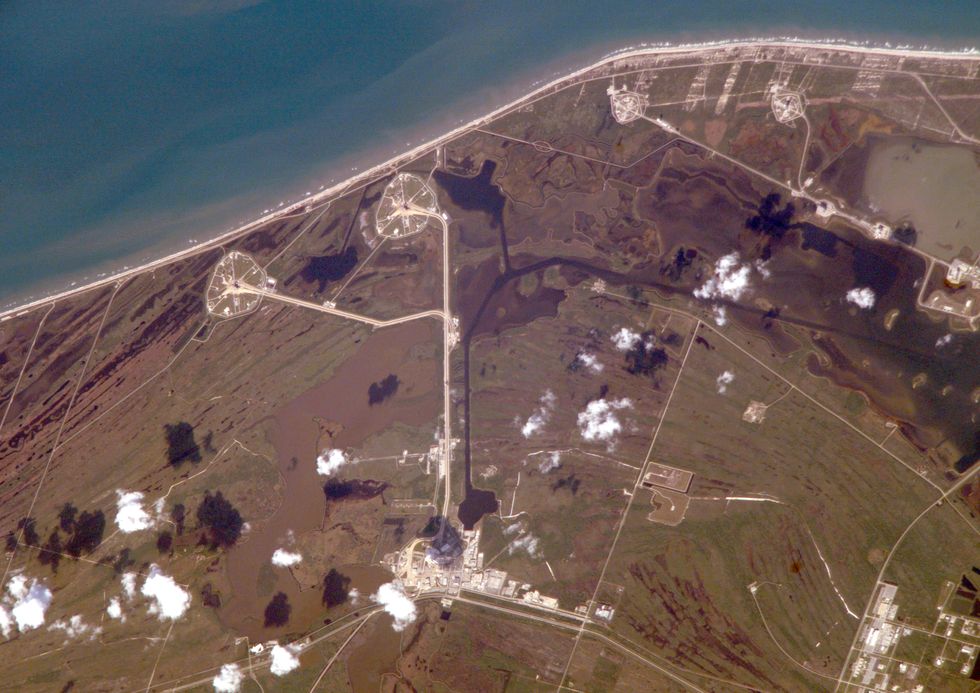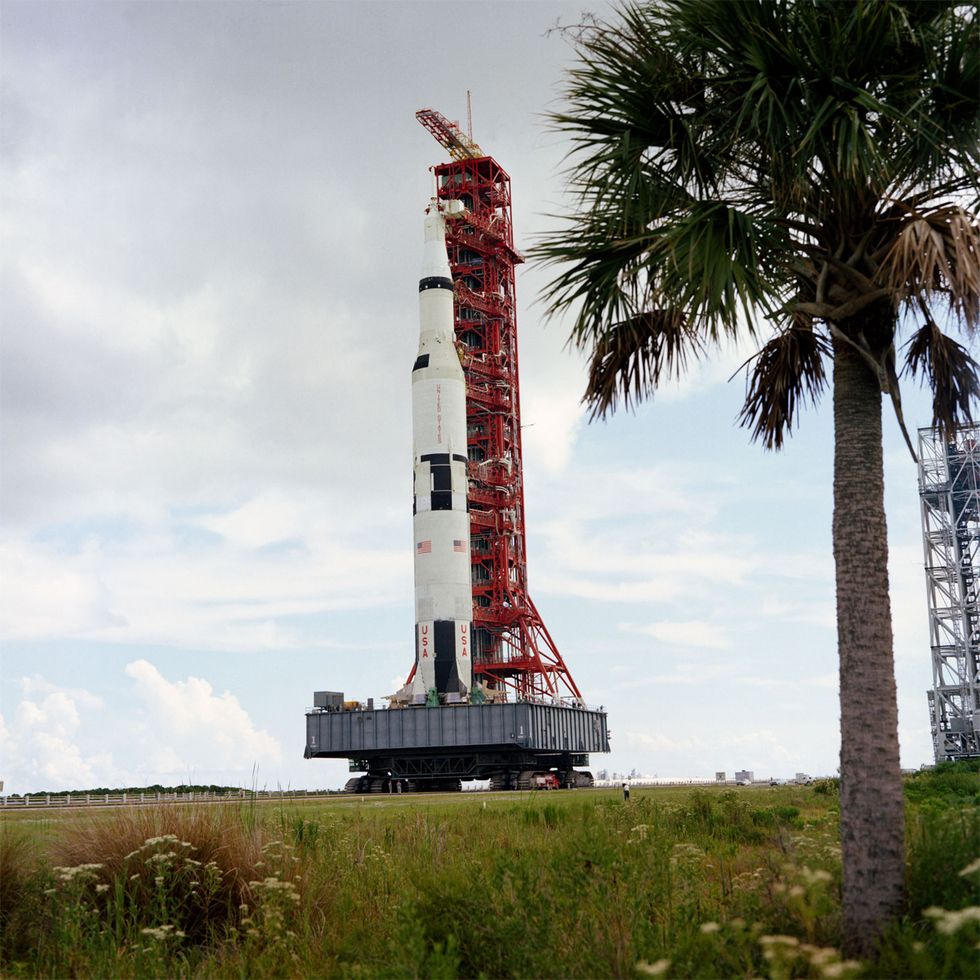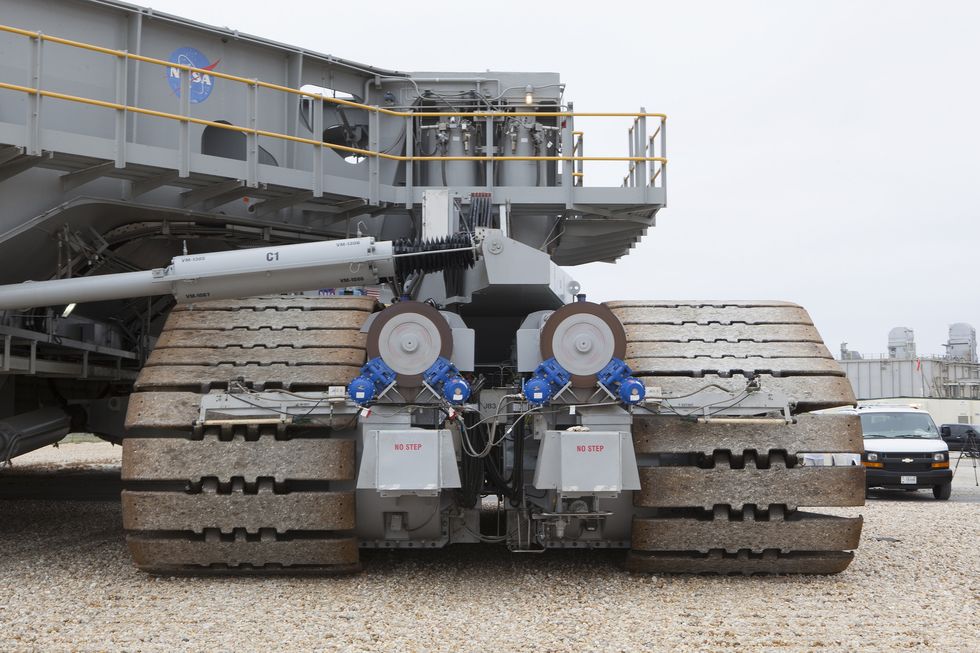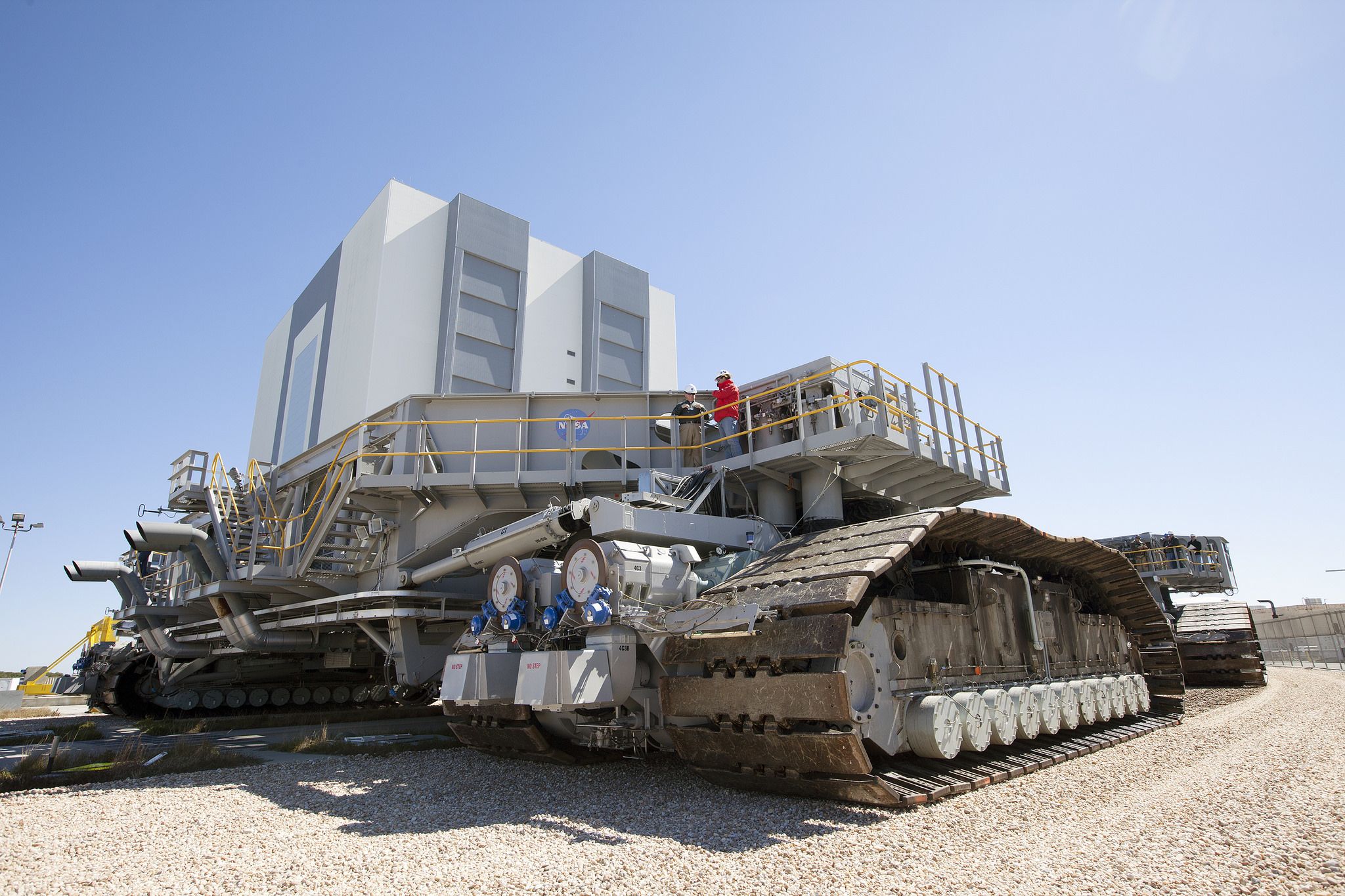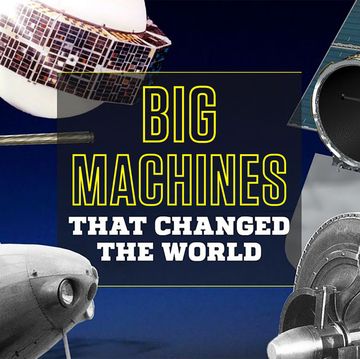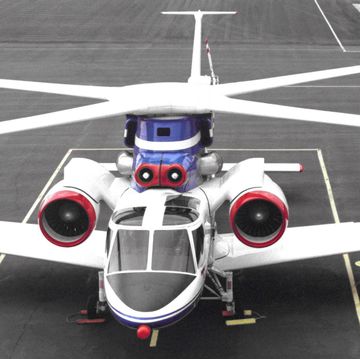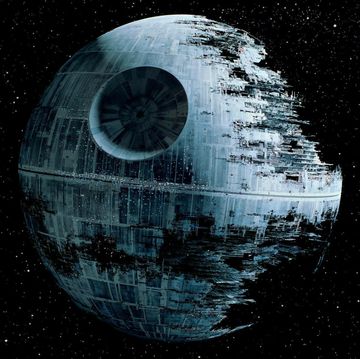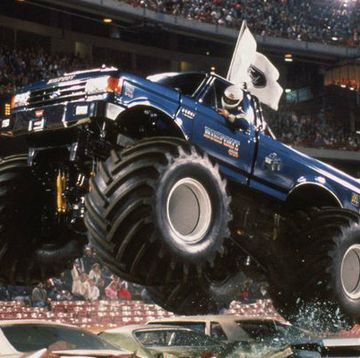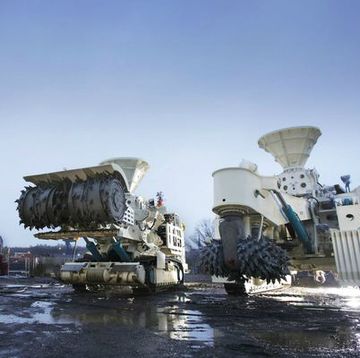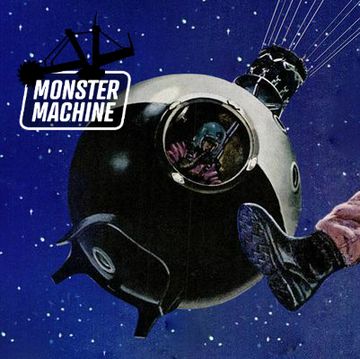Welcome to Apollo Week, celebrating 50 years since the Apollo 11 mission, explaining what it means today, and exploring how its legacy will shape the future of space exploration.
Reaching space takes a lot of gas, and gas is heavy.
The total liftoff weight of the now defunct Space Shuttle system was 4.5 million pounds. The Shuttle’s boosters, external tank, and the fuel made up most of that weight. Add in the mobile launch platform (MLP) and the entire assembly weighed 12.6 million pounds.
So how do you get nearly 13 million pounds to the launch pad? Build a 6.3 million pound transporter the size of a baseball infield.
NASA’s two crawler transporters, named simply CT-1 and CT-2, are historic machines for a number of reasons. They’ve carried everything from the first Saturn V rocket and capsule for the 1967 Apollo 4 mission to space shuttle Atlantis for its last shuttle mission (STS-135) in 2011. And their biggest challenge lies ahead as the crawler-transporters are outfitted to carry the Space Launch System (SLS) rocket, a spacecraft that could one day help put humans on Mars.
Strange Beginnings
In the early 60s, NASA considered several methods for transporting spacecraft including rail line and canal-and-barge schemes. But NASA engineers were inspired by mining operations that used mammoth equipment like the Bucyrus-Erie “Big Hog” strip mining shovel. Big Hog sat atop independent diesel-powered tracks, free of ties to rail or water pathways. Ultimately, Bucyrus rival, Marion Shovel Company of Marion, Ohio would build the crawlers in 1965 using the tracked design.
But 53 years ago, the crawler-transporter was built for to ferry the Apollo spacecraft between the Kennedy Space Center’s Vehicle Assembly Building (VAB) and launch pads 39A and 39B, 3.4 and 4.2 miles away respectively.
The trip from the VAB to the launch pad takes about six hours, and over the years the crawler transporters have made it well over 300 times carrying everything from the first Saturn V rocket and capsule for the 1967 Apollo 4 mission to space shuttle Atlantis for the last shuttle mission (STS-135) in 2011. NASA estimates that each crawler has racked up over 2,200 miles on the gravel paths called “crawlerways.”
The crawlers are among the largest self-propelled land vehicles ever produced, and their mission begins when one leaves the crawler yard with a crew of 15 to 20 engineers and technicians. It heads for an MLP, lifts it up and carries it into the VAB where it lowers the MLP onto high pedestals.
Once a spacecraft and boosters have been assembled on the MLP, the crawler slides beneath the MLP and secures the entire load to its deck. Then it sets off for the launch site by steadying the top-heavy load with a laser guidance system and giant jacking, equalization, and leveling cylinders at each corner.
With the crawlerways lined with “Alabama river rock” from an Alabama quarry, crawler-transports move as fast as 1 mph with works spraying the rocks with water to avoid excess dust. Although a lumbering mammoth, the crawler-transporter can move with extreme precision, traveling as little as one-eighth of an inch, as reported by Road & Track magazine, which “road tested” the crawlers in the 1970s.
Because each launch site is built atop a sloping pyramid of land, the crawler uses its JELs to keep the platform level all the way to the top where it sets the platform in place. It then parks far away from the pad to avoid damage during the launch. Once safely spacebound, the crawler retrieves the MLP and returns to the crawler yard.
The Original Hybrid
NASA’s Crawler Project Manager, John Giles, calls the transporters the “original” hybrid vehicles. “That’s because we use engines to generate electricity to propel us via electric motors,” he told Popular Mechanics.
It’s the same basic idea Chevy uses on its Volt hybrid cars. The crawler employs four V16 diesel engines—two in front, two in back. At each end one produces DC current sent to eight electric traction motors powering two trucks. The other diesel produces AC current for lights, computers, and power to the payload. The trucks contain huge bearings supporting two massive belt tracks each. Each belt contains 57 tread belt “shoes,” and each shoe is 7.5 feet long, 1.5 feet wide, and weighs 2,100 pounds.
With eight one-ton shoes simultaneously slapping the earth, “you get a low frequency vibration which you feel when riding on the crawler. It’s a lot like being on a ship,” Giles says.
At the end of the Shuttle program in 2012 NASA did an extensive study of alternatives to the aging crawler-transporters but concluded they were still the most efficient way to get loads to the pad, and the Chinese space program agreed. They too use transporters at their Wenchang Spacecraft Launch Site on Hainan Island, but their wheels mean they can only carry about one-third as much as the NASA’s crawler-transports.
Crawling Into the Future
With the U.S.’s next heavy-launch rocket the SLS, CT-2 is getting upgraded so it can carry an 18 million-pound load. New JELs, brakes, roller bearings, 16 rebuilt gearboxes and a new Cummins V16 twin-turbo diesel have been added. CT-1 will get a less heavy-duty refurbishment and will still be used for non-SLS loads.
The two crawlers originally cost a total of $14 million, not bad when stretched over 50-plus years with plans to serve at least another 20 years.
If they’re refurbished again, NASA engineers say they’ll need to reinforce a roof beam in one of the crawlers. There, the Marion Shovel engineers who built it signed their names and drew a 1965 Mustang, knighting the CTs as the most ultimate muscle cars on Earth.
This story was originally published on February 14, 2018. It's been updated for the 50th anniversary of Apollo 11.
